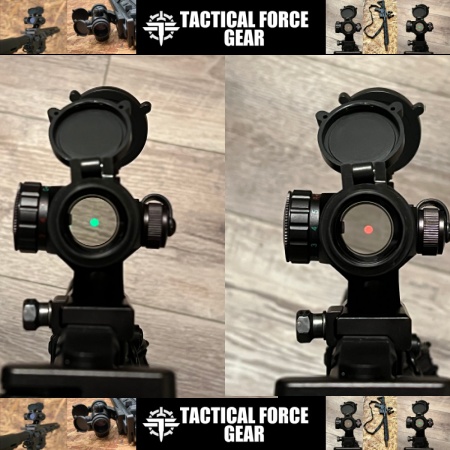Estimated reading time: 7 minutes

Power outages are becoming more and more common, especially in rural areas. Where I live, the power goes out many times per year, either temporarily or for an extended amount of time. Most rural homesteaders live far away from neighbors or town, which can make self-reliance that much more critical.
Making a lights out box is a great way to prepare in case you find yourself in the middle of the night with no power. It lowers the chance of tripping in the dark and keeps panic to a minimum, especially if you have kids, pets, or elderly family members.
Here’s how to make one.
Want to save this post for later? Click Here to Pin It On Pinterest!
Lights Out Box Overview
For those who have never heard the term “lights out box,” it essentially is a box of supplies that is easy to find in the dark. It is the first thing that you will look for in the event of a power outage. A lights out box often is stored near your emergency supplies or in a pantry that is easy to access in the dark.
If your home is large or has multiple floors, consider making a second, smaller lights out box for upstairs bedrooms. That way, you or your family won’t have to navigate stairs or long hallways in the dark just to find a flashlight.
It’s important to note that a lights out box is not a full emergency kit. Lights out boxes are often used when the power goes out that is more of an inconvenience. Keeping a flashlight next to your bed is always a good idea and will make finding a lights out box that much easier when you need it.
How to Make a Lights Out Box
There are a few key components to making a lights out box. Search your home and property to reuse supplies to create a lights out box of your own.
Sturdy Container
Even though we call it a lights out box, yours doesn’t necessarily need to be a box at all. You can use any kind of sturdy container that offers protection from water, heat, and sunlight.
A heavy-duty plastic tote would work as well as a recycled metal container. Using a cardboard box for your lights out box will suffice if stored well, but ideally, you’ll want a box that offers a bit more waterproof qualities than cardboard.
If the box will be stored far from where you sleep, using one with wheels or sturdy handles makes it easier to grab quickly. Label the outside with bold letters and a simple symbol (like a flashlight) so it’s immediately recognizable.
Easy to See in the Dark
Many of us who have experienced power outages on the homestead have been surprised at just how dark a basement or closet can be without a light source. It is important to make sure that your lights out box is easy to find in the dead of night without power. If you keep a flashlight by your bed, consider using reflective tape on the box that will catch the light of the flashlight.
Other options include painting the sides of the box with glow-in-the-dark paint. When using glow in the dark paint, though, be aware that the box should receive natural sunlight during the day in order to properly glow at night. A lights out box with glow in the dark paint stored inside a closet will not be easy to find.
Stick-on battery-powered tap lights mounted near the storage spot are another cheap solution. These LED puck lights can stay on standby for months and can help you spot the box even if your flashlight isn’t within reach.
What to Pack in a Lights Out Box
Many people get confused about what should go into a lights out box. Remember, this is the first thing you’ll look for in a power outage, and the contents should include those supplies and items that will help get you started in an emergency.
Light Sources
Again, while we hope you always have a small flashlight in a nightstand next to your bed, the lights out box should contain light sources for the rest of the family. This includes larger flashlights, candles, headlamps, lanterns, and glow sticks. These items are the first things that you’ll reach for when needing to illuminate the home to check on everyone.
- Pack at least one flashlight with batteries already installed so it’s ready to use immediately.
- If your lanterns or flashlights have replaceable bulbs, include a spare.
- Consider a headlamp for each household member. It frees up your hands and helps with tasks.
Energy Sources
Candles and flashlights will do you no good if you don’t have a way to power those light sources. Pack lighters, matches, flint and steel, and plenty of batteries in your lights out box. Solar chargers are also a good way to use natural light but will probably not be ready for immediate use.
Include at least one hand-crank flashlight or radio combo. These never need batteries or charging and are ideal backups if your batteries are dead or missing.
Kids are notorious for finding batteries to use for their latest electronic toy, so make sure to keep the batteries somewhat hidden in the bottom of the box to discourage kids from taking them.
While these items aren’t always needed in a lights out box, they are nice to have in the event of an emergency. Add a crank radio to your lights out box to help connect you to radio and weather alerts that could be important. Other extra items to add include a battery tester to make sure the batteries in your lights out box are charged and fully functional.
A power inverter can also be a helpful tool to use your car’s battery as a source of energy. Pack an extension cord with the power inverter or to use with a generator as well. Adding an extra cell phone charger could also be very helpful in an emergency.
- Add a small notepad and pencil. This is useful for writing notes, recording blackout duration, or leaving messages if communication is limited.
- Pack a printed sheet of emergency contact numbers in case phones die or aren’t accessible.
- Slip in one or two emergency foil blankets. They take up almost no space and can help retain body heat if your heating is out.
What Not to Pack in a Lights Out Box
Any liquid or fuel should not be included inside the lights out box. These liquids can spill, freeze, or leak, which could ruin everything inside. Consider storing important fuel for oil lamps or propane for lanterns next to the box instead. If you start with a waterproof lights out box, any exterior liquid or contaminants should not be able to ruin the contents.
Remember that your lights out box should be a small box that is easy to find in the darkest situation. It should only include those things that you will need to locate the rest of your emergency supplies. Refrain from packing your lights out box with extra items that will just make it harder to find the light sources within. Most homesteaders store their lights out box next to their stockpile to make it easy to locate while also safe from liquids.
Keeping a small flashlight next to your bed or in strategic places around the home will help you locate a lights out box when needed. Consider storing the box out of the reach of children so that you can guarantee that what you packed inside will be ready for you in an emergency.
Do a check twice a year. Spring and fall work well. Replace used items, test electronics, and refresh batteries as needed. Tape a laminated checklist inside the lid so you can easily see what should be in the box without unpacking everything.
Lights Out Box Checklist
- Batteries
- Battery charger
- Candles
- Emergency radio
- Extension cord
- Extra cords
- Flashlights
- Flint and Steel
- Glow Sticks
- Headlamp
- Lantern
- Lighters
- Matches
- Playing cards
- Power bank
- Power inverter
- Solar Charger
- Whistle
Like this post? Don’t Forget to Pin It On Pinterest!
You May Also Like:
Read the full article here





